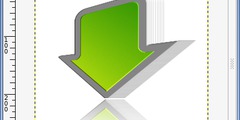Graduated neutral density filter effect
Is there a way to apply a graduated neutral density effect to a
portion of an image in GIMP 2.8.22. Checked the help files, GIMP 2.8
for photographers, and The book of GIMP. Didn't see anything. Don't
know if I missed it or it's simply not there. Had the program and
books for some time. Program was sitting on my computer taking up
space, books were sitting in the bookcase gathering dust. Decided it
was high time I started using both....Izzy
When you consider a NDF was a physical intervention to reduce the amount of light entering the camera (typically top -> dark bottom -> light) an 'effect' is not going to help if the image from the digital camera is blown-out. The color information has gone. You stand a better chance if you take RAW rather than jpeg, there will be a bit more information.
You could start with this about luminosity masks.
https://patdavid.net/2013/11/getting-around-in-gimp-luminosity-masks.html
That done manually but there is a script that generates a set of channels, use as masks or as selections to adjust part of an image.
The example, using Gimp 2.8 replacing a blown-out sky using a gradient. next step might be a different mask for the foreground.
Nothing wrong with Gimp 2.8 but you would be better off upgrading to Gimp 2.10 if you can. Tools such as gradient are now applied directly to the canvas. Your old books very much redundant. What you need to do is not abandon Gimp to the back of a cupboard, use Gimp and experiment.











